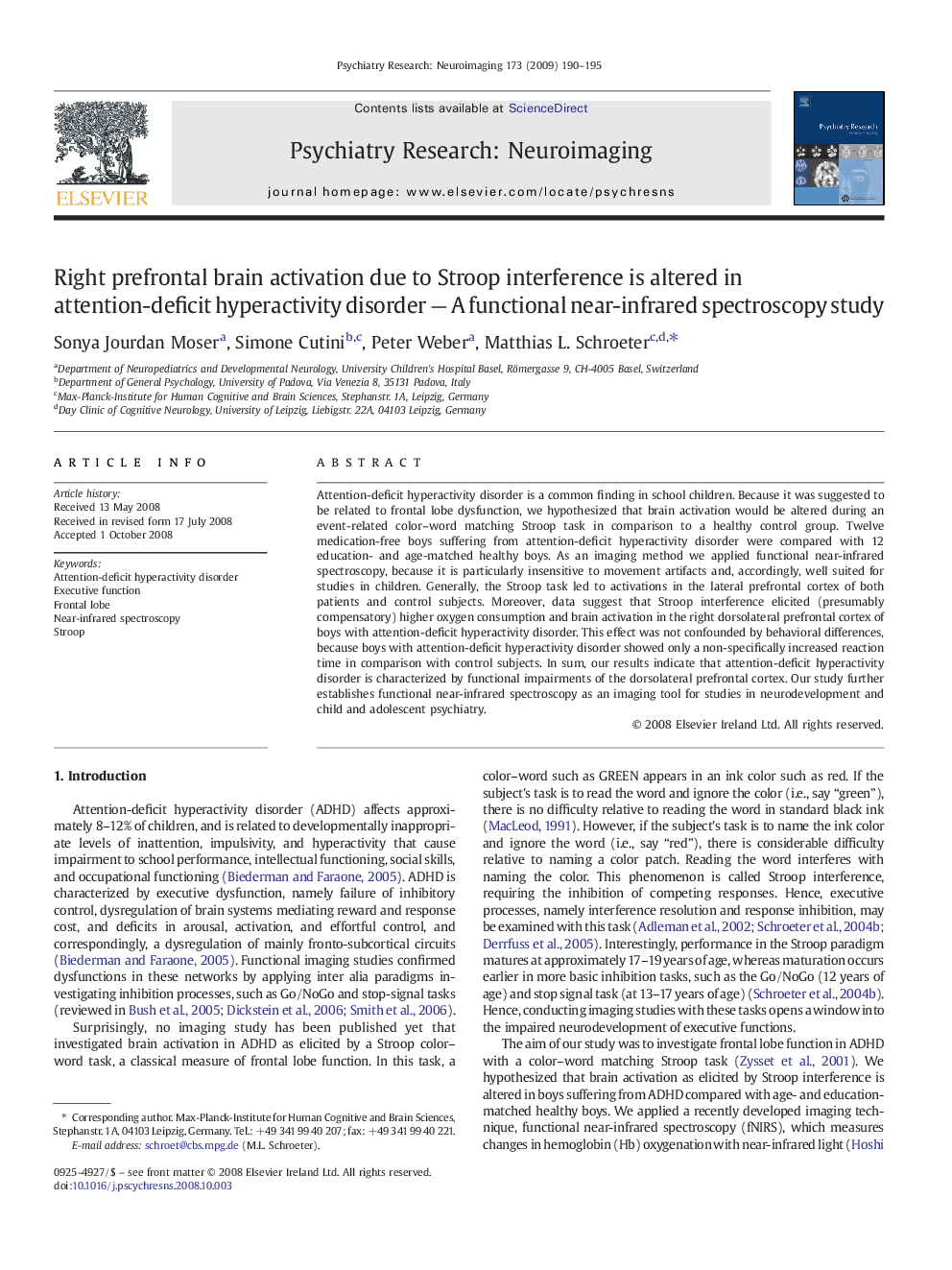| Article ID | Journal | Published Year | Pages | File Type |
|---|---|---|---|---|
| 334836 | Psychiatry Research: Neuroimaging | 2009 | 6 Pages |
Attention-deficit hyperactivity disorder is a common finding in school children. Because it was suggested to be related to frontal lobe dysfunction, we hypothesized that brain activation would be altered during an event-related color–word matching Stroop task in comparison to a healthy control group. Twelve medication-free boys suffering from attention-deficit hyperactivity disorder were compared with 12 education- and age-matched healthy boys. As an imaging method we applied functional near-infrared spectroscopy, because it is particularly insensitive to movement artifacts and, accordingly, well suited for studies in children. Generally, the Stroop task led to activations in the lateral prefrontal cortex of both patients and control subjects. Moreover, data suggest that Stroop interference elicited (presumably compensatory) higher oxygen consumption and brain activation in the right dorsolateral prefrontal cortex of boys with attention-deficit hyperactivity disorder. This effect was not confounded by behavioral differences, because boys with attention-deficit hyperactivity disorder showed only a non-specifically increased reaction time in comparison with control subjects. In sum, our results indicate that attention-deficit hyperactivity disorder is characterized by functional impairments of the dorsolateral prefrontal cortex. Our study further establishes functional near-infrared spectroscopy as an imaging tool for studies in neurodevelopment and child and adolescent psychiatry.
